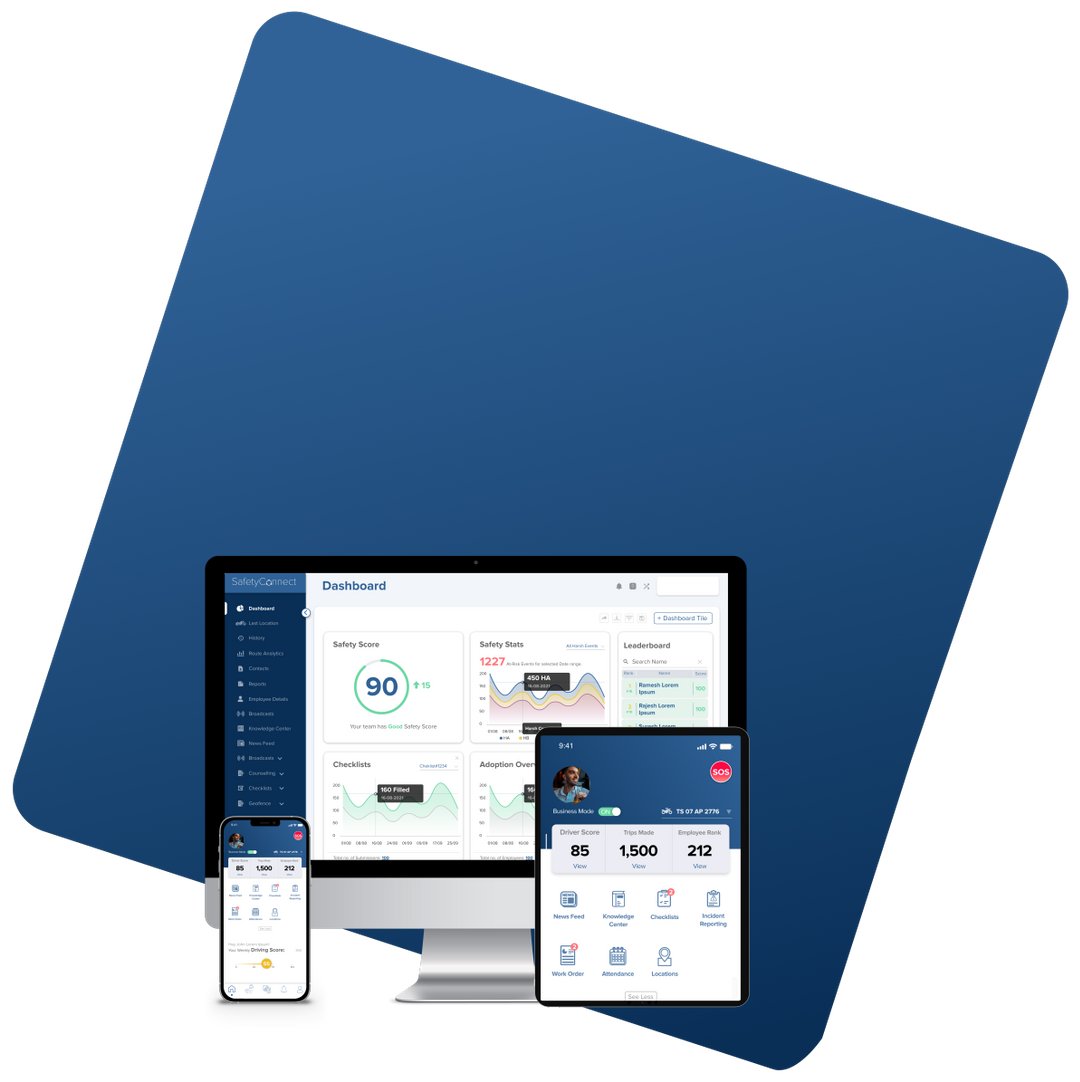Business & Services
accident prevention, business safety, Compliance, cost reduction, driver behavior monitoring, driver safety software, employee safety, fleet management, incident reporting, insurance savings, operational efficiency, risk management, safety technology, vehicle tracking, workplace safety solutions
User
0 Comments
The Benefits of Implementing Driver Safety Software for Businesses: Enhancing Safety and Reducing Costs
As companies rely more on field operations, ensuring driver safety has become crucial in today’s high-paced environment. Rising road traffic and operational expenses make it essential for businesses to adopt effective solutions that prioritize safety while reducing costs. Driver safety software meets this need by leveraging data analytics, real-time monitoring, and behavior tracking, offering a robust framework for safe and efficient driving practices. Below are the key benefits of implementing driver safety software and how it impacts safety and costs for businesses.
1. Valuable Insights into Driving Patterns and Risk Factors
Driver safety software provides companies with in-depth, valuable insights into various aspects of driving behavior, such as speed, braking patterns, acceleration, and lane changes. These insights reveal patterns that might otherwise go unnoticed, enabling managers to understand where risks lie and how to address them. With a clearer picture of driving behavior across teams, businesses can make informed decisions that enhance safety and reduce the likelihood of accidents.
2. Strengthening Driver Accountability
The software also fosters a sense of accountability, as employees know their driving habits are monitored and recorded. This awareness encourages adherence to company policies and safer driving practices, ultimately reducing the number of incidents. Strengthening driver accountability improves safety outcomes and promotes a culture of responsibility and trust across the team.
3. Accident Prevention Through Predictive Analytics
Predictive analytics use historical and real-time data to forecast potential risks based on driving patterns. This allows businesses to identify high-risk drivers and take proactive measures, such as additional training or coaching. Preventing accidents before they occur can save companies from costly incidents, improving both safety and efficiency across operations.
4. Fatigue Detection to Reduce Accident Risk
Fatigue is a common hazard, especially for drivers who work long hours or shifts. Driver safety software detects signs of fatigue by monitoring driving behavior over time, including erratic patterns or extended periods of continuous driving. With real-time fatigue alerts, drivers are prompted to take necessary breaks, reducing fatigue-related incidents and keeping them safe on the road.
5. Ensuring Compliance with Traffic Regulations
Driver safety software supports compliance with traffic laws by monitoring adherence to speed limits and other regulations. Real-time alerts remind drivers of limits and potential violations, helping companies maintain regulatory compliance and avoid fines. Compliance not only keeps drivers safer but also protects the company’s reputation and minimizes financial risk.
6. Lowering Operational Costs and Insurance Premiums
Implementing driver safety software can significantly reduce costs associated with accidents, including repair and maintenance expenses. Moreover, companies with strong safety records are more likely to qualify for lower insurance premiums, leading to direct cost savings. By focusing on incident prevention, companies benefit from both reduced operational expenses and lower insurance costs.
7. Data-Driven Decisions for Continuous Safety Improvement
Driver safety software generates a wealth of data that helps businesses refine safety programs and develop targeted training initiatives. By analyzing driving performance, incident patterns, and risk areas, companies can make data-driven decisions that foster continuous improvement in safety protocols, resulting in better outcomes and a safer environment for drivers.
8. Boosting Driver Engagement and Motivation
Driver safety software often includes gamification elements that engage drivers through leaderboards, challenges, and rewards for safe driving. These features promote positive behavior, creating a work environment that values safe driving practices. By recognizing and rewarding safe behavior, companies build morale, increase driver engagement, and foster a safety-first mindset within their workforce.
9. Improving Incident Response Times
Driver safety software can also help companies respond more quickly in the event of an incident. With instant notifications and precise location tracking, the software enables timely intervention, which can minimize injury severity and reduce downtime. Faster response times are critical in ensuring drivers receive necessary assistance while helping companies avoid extended disruptions in productivity.
10. Enhancing Brand Image and Corporate Responsibility
Investing in driver safety software demonstrates a company’s commitment to employee well-being and road safety, strengthening its brand reputation. Companies that prioritize safety are viewed as responsible and ethical, which can enhance trust among clients, partners, and stakeholders. This commitment to safety helps businesses attract talent, retain customers, and build long-lasting industry relationships.
Conclusion
Driver safety software like SafetyConnect provides businesses with an effective solution to enhance driver safety while reducing operational costs.
SafetyConnect is a powerful tool that transforms driver safety with a robust suite of features tailored to elevate road safety standards. By delivering detailed reports on at-risk driving behaviors, identifying accident-prone hotspots, and offering improvement suggestions, SafetyConnect enables companies to implement targeted interventions and foster safer driving habits. Its gamified rewards system further encourages drivers to prioritize safety, creating a proactive safety culture across teams. With added features like privacy protection, incident reporting, and SOS alerts, SafetyConnect goes beyond monitoring to ensure both driver trust and readiness in emergencies. For companies committed to enhanced road safety, SafetyConnect stands as an invaluable resource.














Post Comment